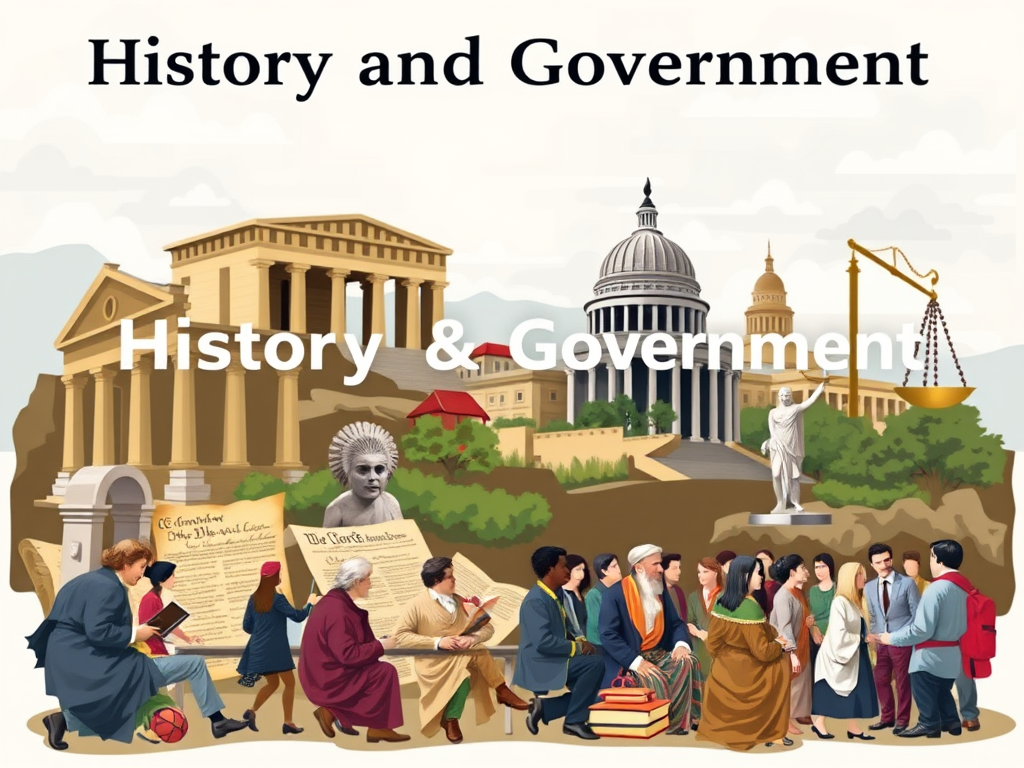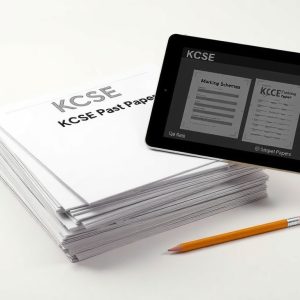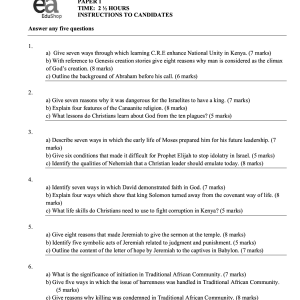Description
The document is a KCSE (Kenya Certificate of Secondary Education) Mock History and Government Paper 1 designed for students to assess their knowledge and understanding of historical and governmental concepts relevant to Kenya. The paper is structured into three sections: A, B, and C, with specific instructions for candidates regarding how to answer the questions.
Structure of the Paper
- Instructions to Candidates:
- The paper consists of three sections: A, B, and C.
- Candidates must answer all questions in Section A, three questions from Section B, and two questions from Section C.
- Answers should be written in the provided answer booklet.
Section A (25 Marks)
This section contains 17 short-answer questions, each requiring brief responses. The questions cover a variety of topics, including:
- Pre-Historic Sites: Identification of the site where Kenyapithecus fossils were discovered.
- Cultural Customs: Social customs adopted by the Suba from neighboring communities.
- Colonial Treaties: Provisions of the Anglo-German treaty of 1886.
- Democracy: Principles of democracy and factors that facilitated white settlers’ establishment in Kenya.
- Kenyan Citizenship: Ways to become a citizen of Kenya.
- Political History: Formation of political parties like KADU and KANU and their historical context.
- Parliamentary Functions: Roles and responsibilities within the Kenyan parliament.
- Public Finance: Institutions controlling public revenue and expenditure, alongside challenges faced by county governments.
- Welfare Organizations: Functions of African welfare organizations during colonial times.
- Colonial Education: Commissions established to investigate African education in Kenya.
- National Referendums: Definition and significance in governance.
Section B (45 Marks)
This section requires candidates to answer three questions from a selection of five broader questions that allow for more detailed responses. Topics include:
- Migration: Reasons for the migration of the Somali community and the political organization of the Nandi during pre-colonial times.
- Colonial Acquisition: Methods used by the British to acquire colonial possessions and the impact of East Africa’s partition on Kenya.
- Political Associations: Early political associations formed during colonial times and the causes and effects of the Mau Mau war.
- Agricultural Policies: Factors discouraging Africans from growing cash crops and challenges faced by settler farming.
Section C (30 Marks)
Candidates are required to attempt two questions from this section, which focuses on more analytical and evaluative aspects of history and governance:
- National Unity: Symbols of national unity in Kenya and the importance of national integration.
- Independence Constitution: Features of the Independence constitution and the rights of detained persons.
- County Assemblies: Members of county assemblies and ways the national government allocates revenue.




Reviews
There are no reviews yet.